Idea by
Claire Lubell
Call for ideas 2016
The Terminal
The Terminal

This project began with a future tram extension into Marseille's marginalized 'Quartiers Nord'. What should be an infrastructure of access is bound up in the conflicts of a territory. Marseille is a city of conflicting reputations. A city of slow indulgence: of sunshine, beaches, women, and alcohol. A city of daily sweat: of industry, immigration, trade, and poverty. A city of fast deals: of drugs, prostitution, gangs, and corruption. These reputations are constant references of the limit of autonomy within the city. The project, The Terminal, is a newspaper because a newspaper and Marseille are synonymous: both straddle fact and fiction, both are a vernacular collection, both construct a fragmented whole. The newspaper exposes the conflicts of the tram line, speculates on their evolution, and projects new realities that the line may confront and construct. Masquerading as a momentary reality and a whole, the newspaper is a critical cartography, both descriptive and projective.
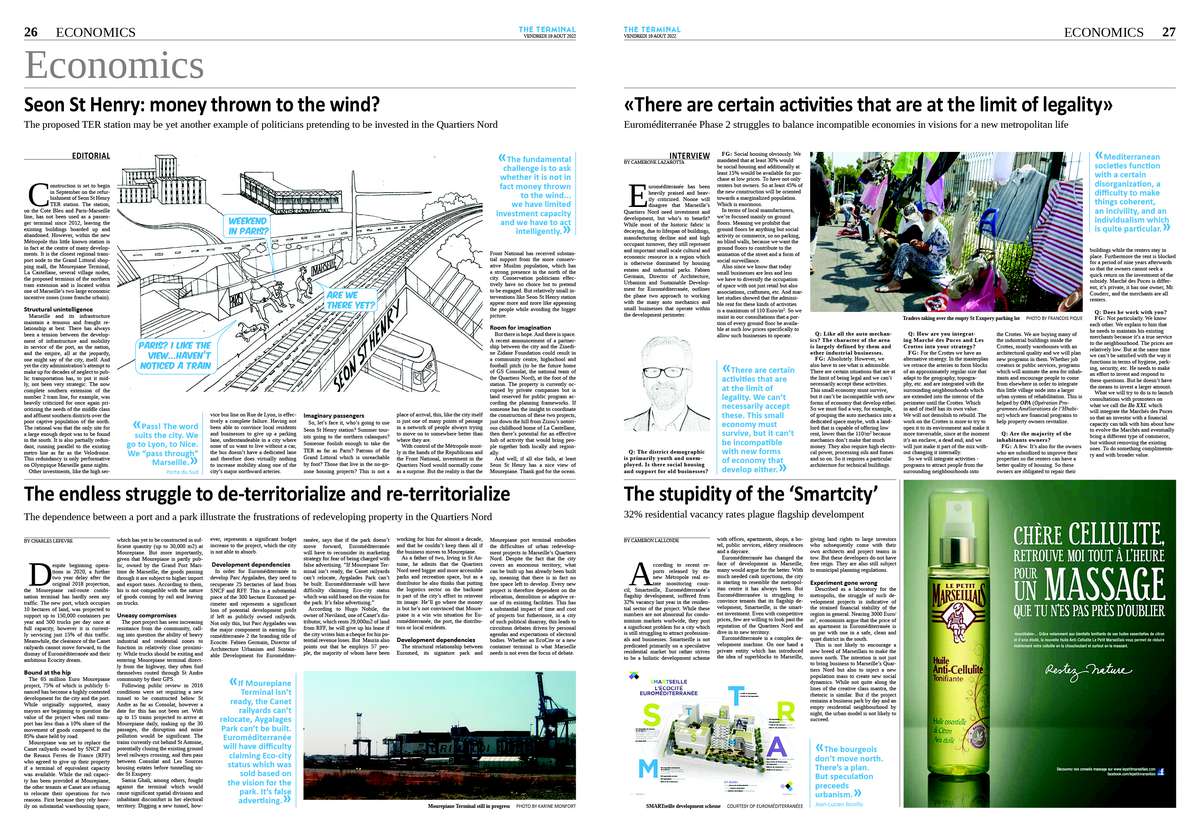
The newspaper, like the city, creates friction by colliding unresolved opinions and realities - headlines, images, quotes, and advertising - within the physical space of a page. It is set in the past, present and future simultaneously, in this case the plausible near future of Friday, August 19, 2022, the day itself being arbitrary, because news happens everyday. As a universally accessible medium, the newspaper merges the possible realities and fictions of everyday life in Marseille.

The newspaper subverts the conception of a project as a representation of the solution to a rigorously analyzed linear problem. In its totality it does not propose a foreclosed and singular representation of a territory but rather conceives of the newspaper, a temporal construct, as a territory itself produced by multiple potential voices and speculations which are multiple in their representation.
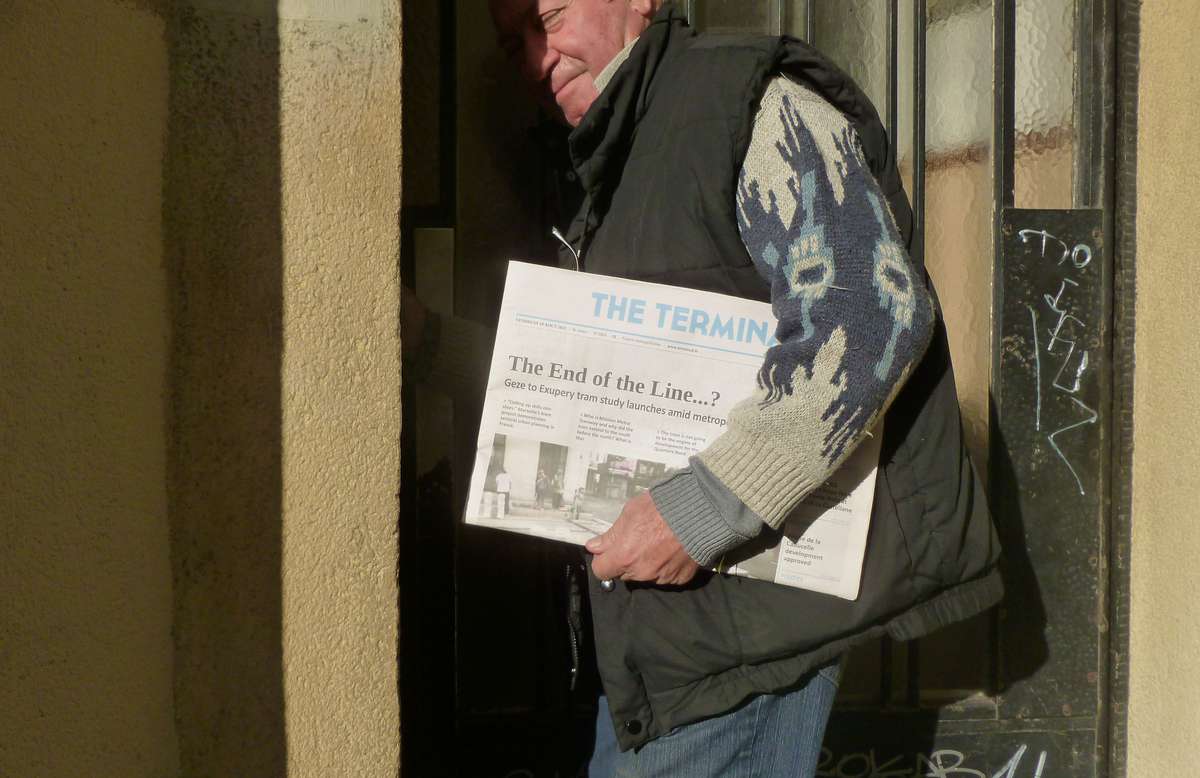
The newspaper is a finite and curated product. But rather than an autonomous object, it is an everyday infrastructure for perpetuating the unstable relations that make the city. Having started with the line on the map, the project is therefore rather the (re)construction of that map. Like any analytical map, the newspaper makes no claim to pure objectivity. The selection of facts inevitably creates a subjective reality.
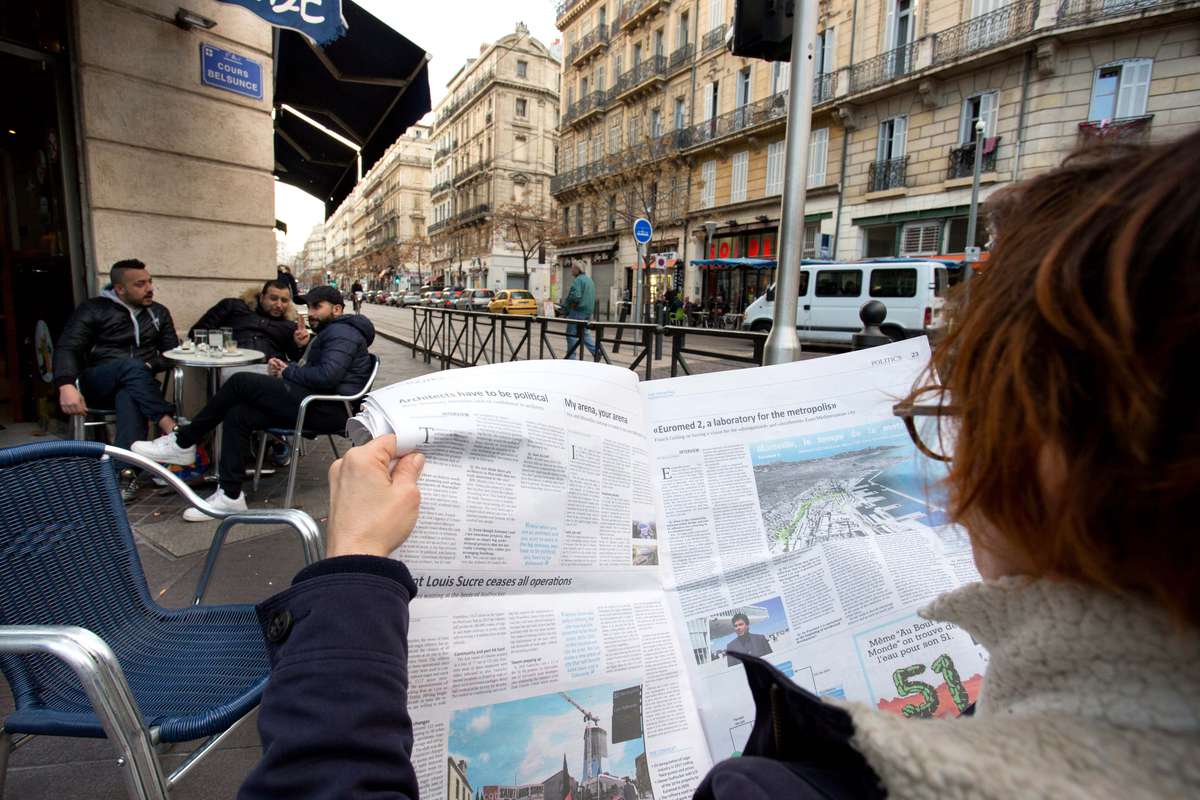
The immediacy of the journalistic medium foregrounds physical space as the producer of broader political, economic and cultural geographies rather than architecture simply as buildings which emerge from abstract maps. If the relevance of architecture is increasingly detached from material reality by the mediation of globally commodified representations, then this project argues for the specificity to be found in the relationship between architecture and geography.
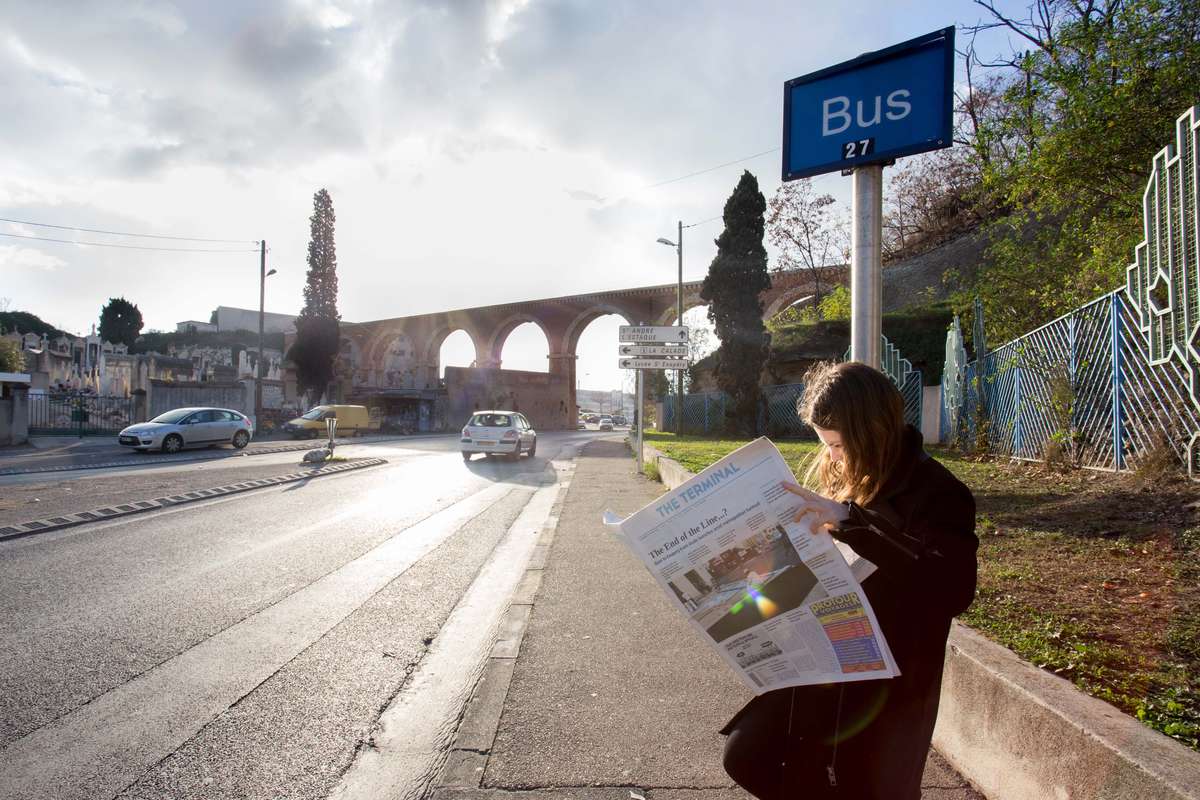
It is about the transparency of both exceptional and banal stories from near and far, but those stories never exist in isolation, always in a non-linear, non-hierarchical relation. It is also an object of solitary, individual routine and yet one which explicitly relates us to others and to a world beyond our physical space. In the end, no narrative is autonomous in the newspaper, just as no individual is in the city. The newspaper is the limit of autonomy.
The Terminal
The Terminal

This project began with a future tram extension into Marseille's marginalized 'Quartiers Nord'. What should be an infrastructure of access is bound up in the conflicts of a territory. Marseille is a city of conflicting reputations. A city of slow indulgence: of sunshine, beaches, women, and alcohol. A city of daily sweat: of industry, immigration, trade, and poverty. A city of fast deals: of drugs, prostitution, gangs, and corruption. These reputations are constant references of the limit of autonomy within the city. The project, The Terminal, is a newspaper because a newspaper and Marseille are synonymous: both straddle fact and fiction, both are a vernacular collection, both construct a fragmented whole. The newspaper exposes the conflicts of the tram line, speculates on their evolution, and projects new realities that the line may confront and construct. Masquerading as a momentary reality and a whole, the newspaper is a critical cartography, both descriptive and projective.
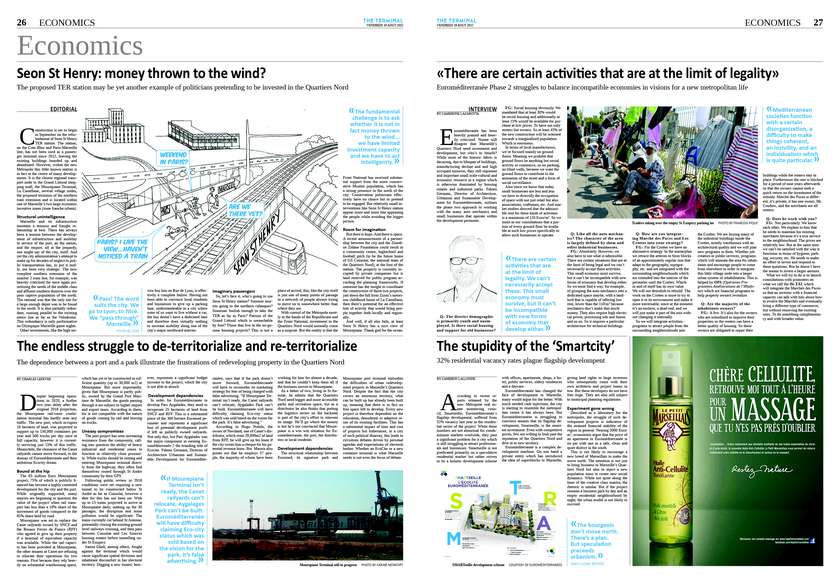
The newspaper, like the city, creates friction by colliding unresolved opinions and realities - headlines, images, quotes, and advertising - within the physical space of a page. It is set in the past, present and future simultaneously, in this case the plausible near future of Friday, August 19, 2022, the day itself being arbitrary, because news happens everyday. As a universally accessible medium, the newspaper merges the possible realities and fictions of everyday life in Marseille.
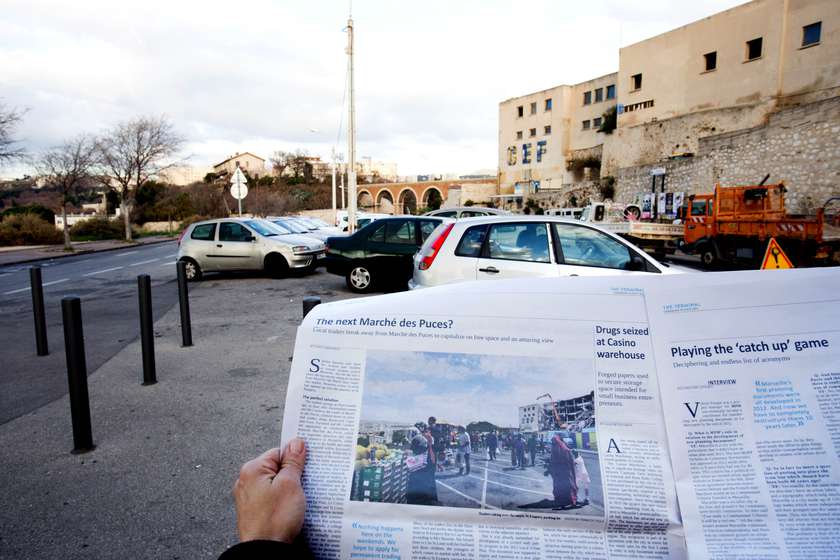
The newspaper subverts the conception of a project as a representation of the solution to a rigorously analyzed linear problem. In its totality it does not propose a foreclosed and singular representation of a territory but rather conceives of the newspaper, a temporal construct, as a territory itself produced by multiple potential voices and speculations which are multiple in their representation.
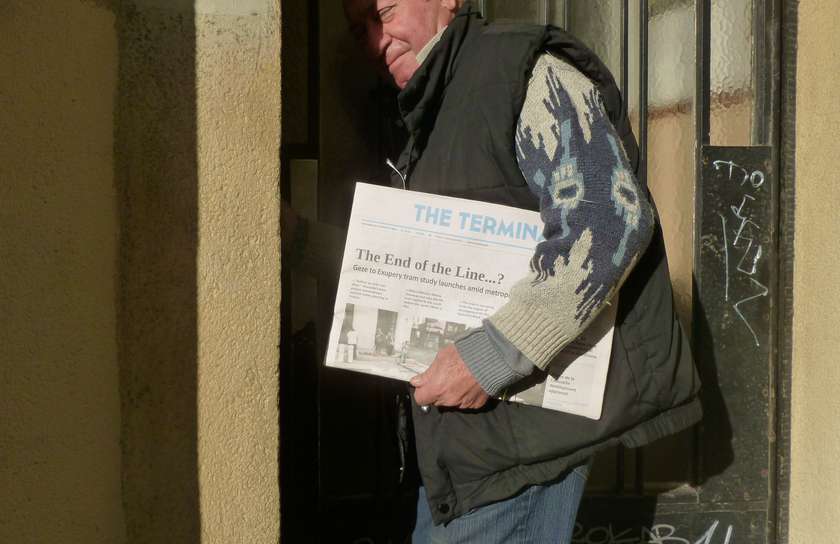
The newspaper is a finite and curated product. But rather than an autonomous object, it is an everyday infrastructure for perpetuating the unstable relations that make the city. Having started with the line on the map, the project is therefore rather the (re)construction of that map. Like any analytical map, the newspaper makes no claim to pure objectivity. The selection of facts inevitably creates a subjective reality.
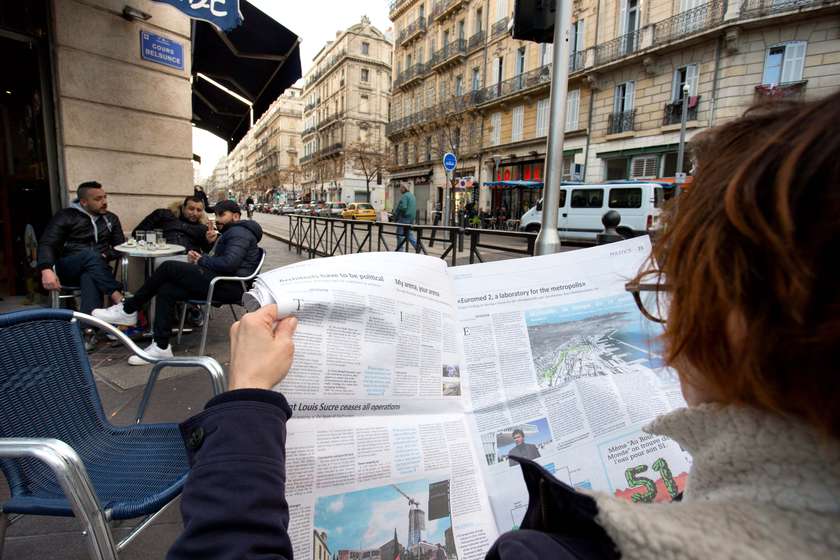
The immediacy of the journalistic medium foregrounds physical space as the producer of broader political, economic and cultural geographies rather than architecture simply as buildings which emerge from abstract maps. If the relevance of architecture is increasingly detached from material reality by the mediation of globally commodified representations, then this project argues for the specificity to be found in the relationship between architecture and geography.
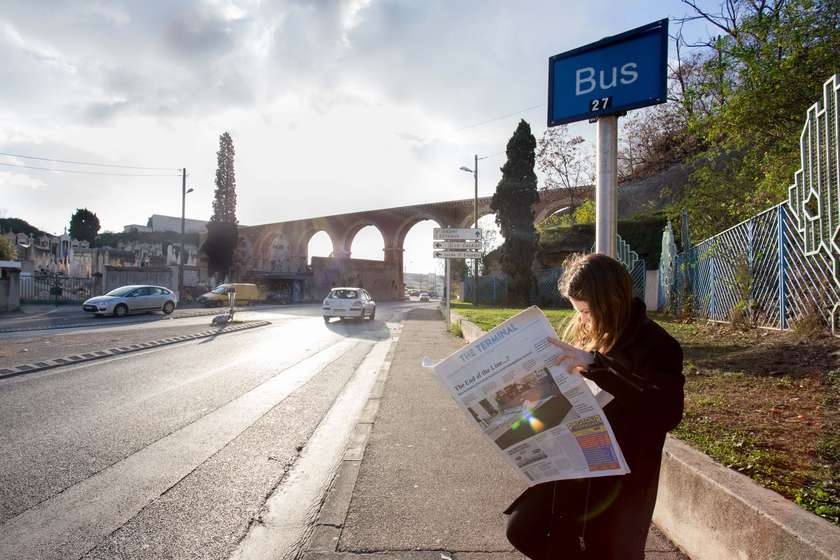
It is about the transparency of both exceptional and banal stories from near and far, but those stories never exist in isolation, always in a non-linear, non-hierarchical relation. It is also an object of solitary, individual routine and yet one which explicitly relates us to others and to a world beyond our physical space. In the end, no narrative is autonomous in the newspaper, just as no individual is in the city. The newspaper is the limit of autonomy.